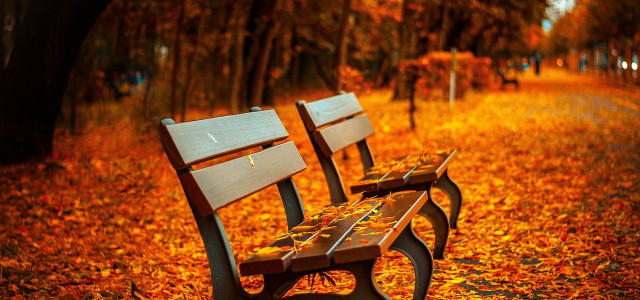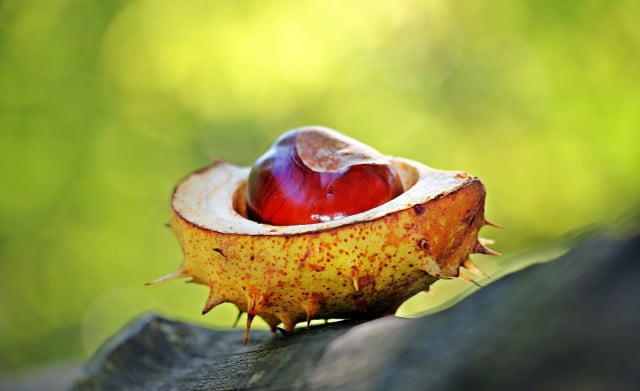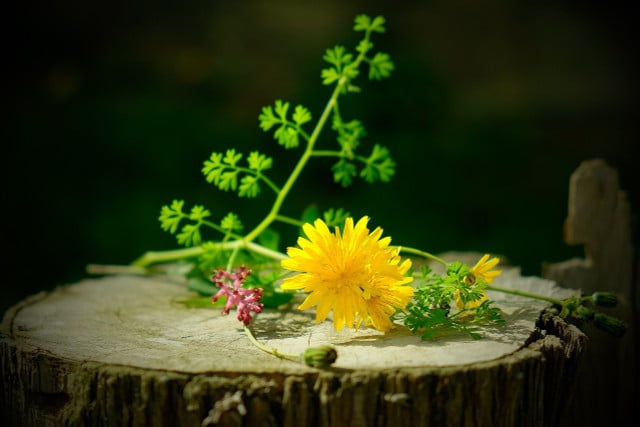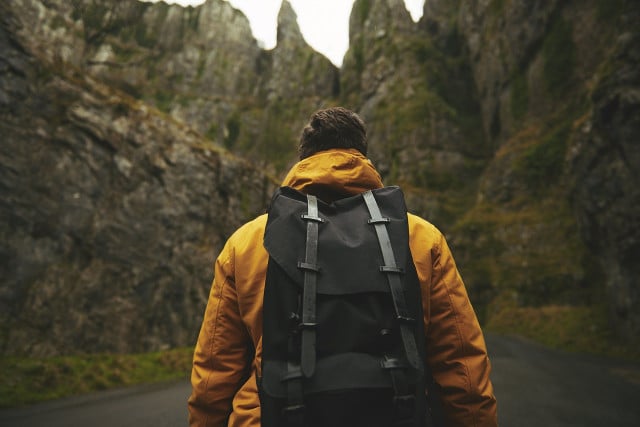
On an autumn walk, you can not only enjoy colorful leaves, but also collect useful plants or their seeds. Here we tell you what there is to discover and what you should look out for.
When we go for an autumn walk, the cold air burns our noses, but the sky is often still blue in the sun. Autumn prepares us for winter with a gentle transition in the weather and nature once again provides humans and animals with nuts, seeds and herbs.
In autumn, the intense colours of the trees can put you in a good mood and pleasant temperatures encourage you to spend time in the fresh air alone or with friends and family. An autumn walk is healthy and makes you happier. It strengthens the circulation and immune system and helps you relax. Find out why you should take time to go for a walk every day here: Going for a walk: A few steps a day are so healthy.
Collecting leaves and chestnuts on an autumn walk

(Photo: CC0 / Pixabay / pixel2013)
Many people know it from kindergarten: collecting leaves on an autumn walk and making crafts with them or sticking them in notebooks. This is how we learned about the local tree species and were able to quickly recognize them by the shape of their leaves. Why not brush up on this knowledge or pass it on to your niece or nephew? With helpful apps and simple tips, you can identify the plants and label the colorful leaves and stick them in a notebook.
Autumn is chestnut time. Every year, children and adults collect the fruit of the chestnut tree, which is an indispensable part of parks and cities. There is only one type of chestnut that is edible for humans, the marron. You can collect these between the end of September and the end of November. Chestnuts can be processed in many different ways, as you can find out here: Chestnut recipes: delicious ideas for sweet chestnuts
Even though horse chestnuts are poisonous to humans, there are good reasons to collect them outdoors:
- When we collect, we spend time together in the fresh air.
- Children love to make animals or other figures out of the chestnuts they have collected. This is healthy, as crafting trains fine motor skills in both children and adults. Also read: Crafting with chestnuts: Instructions for chestnut men and the like.
- Do you just like collecting and don’t want to do any crafting? Wild boars and deer really like chestnuts. Forest rangers or game reserves often have collection containers where you can bring the collected chestnuts for the animals.
- You can also make detergent from horse chestnuts.
What wild herbs and nuts do we find on our autumn walk?

(Photo: CC0 / Pixabay / josealbafotos)
On your autumn walk, you can come across all kinds of fruit trees and nut bushes. Apples can be picked until the end of October/beginning of November, pears until the end of November. Nuts such as walnuts or hazelnuts can be picked from mid-September to the end of October. If you want to pick the fruit, there are a few rules to follow:
-
Do not collect fruits and nuts from private property. This can even be reported as theft. Some property owners allow collecting even on private property. Look for identifying signs.
- The Mundraub map also shows you where you can harvest nuts and fruits for free.
- Only collect fruit and nuts that have already fallen from the tree. Do not shake the trees.
- Often, nature reserves are not allowed to be entered. Here, too, pay attention to the relevant signs and do not collect fruit and nuts without permission.
You are free to pick wild herbs. Of course, you should not enter a nature reserve or go into someone else’s garden. But you can look for wild herbs around the gardens, in meadows and in forests.
Please note:
-
Never pick too many herbs from one spot. Less than a third is a good guideline to allow the plant to recover from picking.
- Only collect herbs that you can identify with certainty. You can find tips here: Collecting, identifying and eating wild herbs: 11 tips
In autumn you can still find some useful herbs, including ground elder and bedstraw. You can recognise ground elder in autumn by its fine structure and slightly jagged leaves. It is a popular bread spice. Bedstraw, on the other hand, is said to have a calming effect and is said to help with varicose veins when eaten regularly in salads. You might be lucky and find nettle seeds. Make sure they are completely dry before storing them. This will prevent mould.
You can read here which wild herbs you can collect on an autumn walk and what effect they have: 8 wild herbs that you can collect now in autumn
There is no bad weather, just bad clothing

(Photo: CC0 / Pixabay / Pexels)
Autumn can be changeable. Temperature fluctuations of more than five degrees are not uncommon. For an autumn walk, you should dress appropriately for the weather. Sometimes it helps not to rely solely on the temperature display on your smartphone, but also to estimate the weather by taking a short walk into the garden or onto the balcony. This is because the number of degrees can differ from how we perceive the heat or cold.
When you’re out and about, you shouldn’t be cold or sweaty. The famous onion look (several layers of clothing from thin (undershirt) to thick (jacket)) can help you regulate your temperature.
You can get more tips for suitable and sustainable outdoor clothing here: 7 tips for sustainable outdoor clothing & fair outdoor brands
Read more on Techzle\.com:
- Forest walk: Why it is so healthy
- Avoid autumn depression: How to fight the autumn blues
- City trips in autumn: 5 beautiful destinations in Germany
Edited by Melanie Grünauer
** marked with ** or orange underlined Links to sources are sometimes affiliate links: If you buy here, you are actively supporting Techzle\.com, because we then receive a small part of the sales proceeds. More information.